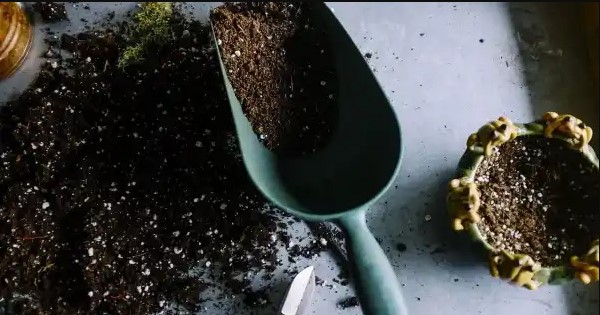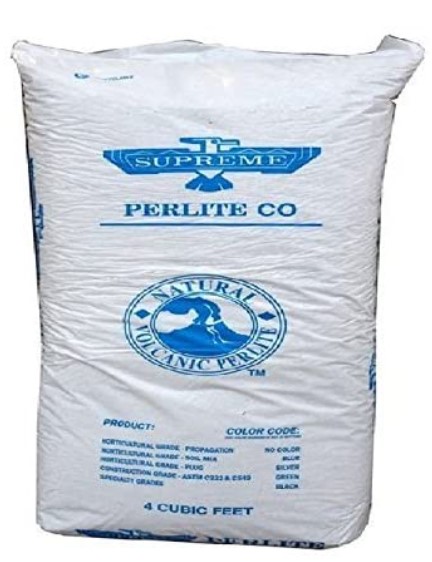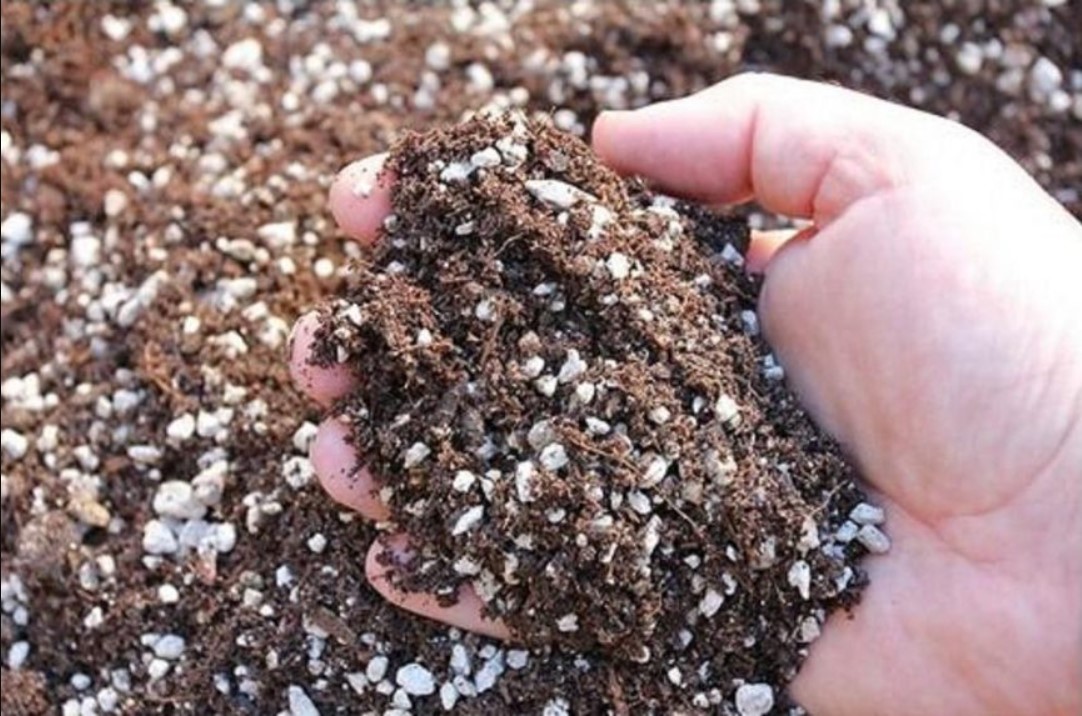Many people in the garden are always amazed at the little white globules in the earth. No, it’s not styrofoam or anything like that. They are little helpers that offer a lot of benefits for the earth. And what is good for the earth is just as good for the cannabis plant. Let’s explore the benefits of perlite and why you should use it in your garden.
Basically, we recommend that you make sure that the soil contains perlite when you buy it. Our soil recommendations are already enriched with perlite so that you no longer have to worry about them.
If you want to buy Perlite individually, we recommend you should buy a large bag in advance, as perlite can easily be stored permanently. And you save on shipping costs.
What is perlite?
Perlites are industrially foamed volcanic glass. This is heated very quickly to 1000 ° C so that the glass crystals grow to 20 times their size. This process creates small spaces in the crystals and offers a space for water, nutrients and even microorganisms. But these can also absorb pollutants. These small “pearls” are called perlite.

In horticulture, perlite is used as a soil additive that improves the soil structure. The advantage is that it is pH-neutral and low in salt. As a result, you don’t have to pay special attention to the nutrient supply if you add perlite to the substrate.
Where is perlite used?
Perlite is particularly ideal when growing with soil in pots to prevent the plant from drying out and becoming too salinized. Perlite should be mixed under the soil, especially for containers that only offer a very small space for the roots of the plants. It significantly supports irrigation, drainage and ventilation within the earth.
For growing weed outdoors, perlite is particularly useful in soils that tend to dry out quickly. This includes in particular sandy soils or those that are rarely moistened by rain.
Both outdoors and indoors, the air is stored inside the earth by the perlite, as a small layer of air forms around each perlite grain. This increases the availability of oxygen and stimulates root growth.
Benefits of perlite
Actually, perlite offers almost only advantages in cannabis cultivation. They improve the oxygen supply, can absorb and store too much moisture and even protect the plants from over-fertilization and salinization. In the growth phase, they also facilitate root growth and are therefore often added to commercial potting soils.
Better ground ventilation
The cavities in the perlite make it easier for oxygen to penetrate the substrate and aerate the roots. This allows cannabis to breathe better and the roots can more easily root through the substrate.
If the soil has no perlite and is compressed too much, the plant cannot “breathe”. This slows down the uptake of nutrients and thus also the growth of roots.
Better water drainage
If you have watered the plant too much, perlite can absorb the excess. The loosened soil in the root ball allows the water to flow off better.
Without perlite, waterlogging can develop and root rot can result. And that can mean a quick death of the plant.
Preserves soil moisture
If the soil of the cannabis plants dries out too much, cannabis switches into a kind of emergency mode. This can mean that flowering starts suddenly or even that the plant is shivering. When hermaphroditic, the female plant forms the notorious male pollen sacs in order to pollinate itself.
In order to protect the plant from this emergency mode, you have to ensure that the cannabis substrate is always at the same, pleasant level of moisture. This is where perlites help the grower. Because they can store excess moisture from the earth and at the same time release it slowly. The substrate is thus protected from overwatering and from drying out at the same time. This protects the hemp plant from stress and a possible emergency reaction.
Since cannabis can take root up to 4 meters deep when grown outdoors, it is usually quite well protected from dehydration. Here you can still mix in perlite at the grow spot and ensure that the plants are not so badly affected by periods of drought. In the end, this increases the harvest again.
Buffering effect
Should the grower mean things too well with his plants when it comes to fertilizer, the perlite buffer function comes into play here. Excess salts and nutrients settle on the perlites and are not immediately absorbed by the plant. This preserves the health of the grow.
Promotes soil life
When growing on organic soil, the cavities in perlites are also occupied by microbes. They make a valuable contribution to the stability and nutrition of cannabis plants. They eat excess nutrients and toxins and therefore have a symbiotic character.
In summary, the benefits of perlite are numerous:
- Easier rooting
- Keeps the grow from drying out
- Protects against root rot
- Protects against over-fertilization or over-salting
- Preserves soil life (with organic soils)

What should you watch out for when using perlite?
Perlite can be used in all substrates. They are not only suitable for classic soil, but also for coconut. They can also be used in potting soil, but this is not absolutely necessary.
Perlites are also suitable for all types of pots. Whether plastic pots, fabric pots or air pots – they all benefit from the advantages of perlite.
The easiest way is always to buy suitable cannabis soil where perlite is already mixed in. This saves a lot of work and lugging the big bags. Also, not every grower has enough space in their home to store the large perlite bags permanently.
If you want to add perlite to the soil yourself, the mixing ratio depends mainly on the fertilizer dosage in relation to the pot volume. In other words, the higher the fertilizer concentration in the soil, the more perlite you should mix in.
For a normal grow (11L or 14L end pots with fertilization according to the scheme) we recommend as a rule of thumb: 20% perlite and 80% soil of the pot volume. In other words, the mixing ratio of perlite to earth is 1: 4.
Benefits of Perlite for Autoflower Weed Plants
If you are growing autoflowers, we recommend 25% perlite and a lower drainage layer in the pot.
Since auto varieties should not be repotted, they will germinate directly in the end pot. Since there are not yet any roots that can pull off the water, waterlogging can very quickly develop in the pot. Therefore you have to increase the drainage.
In our Dagga Seeds lab, we have increased the perlite content of the Light Mix soil for our Automatic Grows from 20 to around 25%. We also fill the bottom of the fabric pot with a 300-gram layer of perlite. Only then was each pot filled with soil. This avoids any stress for the plants in advance.
How Much Perlite when Growing in Small Planters?
If you grow in small pots ( e.g. 8 L or smaller) and want to raise the largest possible plants, you should increase the perlite content to 50%. Less volume and normal fertilization will result in a higher concentration of nutrients in the soil. That’s why you need more perlite to avoid over-fertilization due to the better drainage effect.
Even with hungry strains that you know to be nutrient eaters, it is worthwhile to set the perlite content higher.
It is important to plan a top layer of earth in the pot if the pearlite content is more than 20%. In other words, you should leave the top 5 cm layer of soil without perlite. This means that the light globules do not float with the water when pouring from above.
Alternatively, you can pour using the ebb and flow method. In other words, water from below by pouring the water into the saucer and the plant soaking up the water from it. A slow irrigation system, such as a drip or capillary irrigation system, could also be used.
Perlite in Coco Coir Soil Mixes
If you decide to grow in coconut soil, you should mix 1: 1 . Without perlite, coconut compacts too much, which can cause waterlogging. And with the natural decomposition of the coconut material, salts are released, which leads to burns and imbalances in the nutrient ratios! That’s why you need a strong drainage effect here to prevent this.

What should you watch out for when buying?
Completely mixed soils are already enriched with perlite. Whether and in what proportion the soil contains perlite is usually stated on the packaging. Depending on the grow setup, you can buy more perlite and increase the amount in the soil.
If you want to buy perlite separately, you should be careful. The packaging must explicitly state that the product is suitable for horticulture. There is also perlite that is coated with silicone. The latter is not suitable for our cannabis soil.
Perlite is available in different grain sizes from 0 to 3 mm, 0 to 6 mm and 2 to 6 mm. In general, all sizes could be used. A grain size of 2 to 6 mm is recommended for potting soil because it does not become silty so quickly. For the soil afterwards, small grain size is always preferred.
You can usually find perlite in building material markets, hardware stores or plant centers. Since perlite is quite light, it can also be purchased cheaply online. As already said above, please pay attention to its suitability for the garden.
When buying from a building materials store, you have to expect 50 or 100-litre bags. They take up a lot of space in an apartment and are enough for far more than a few pots. In the grow shop or sometimes even in the head shop, there are smaller batches that can be bought per litre.


I bought vermiculite instead by accident, big mistake, not the same at all
Hurrah! At last I got a webpage from where I will be capable
of really getting helpful knowledge.
I am actually thankful to the owner of this web page who has shared this great information.
[…] Perlite is a natural product made from volcanic natural rock. It is ideal as a reservoir for water and also serves to ventilate the roots. In the meantime, a little perlite has been added to most of the commercially available potting soil. […]